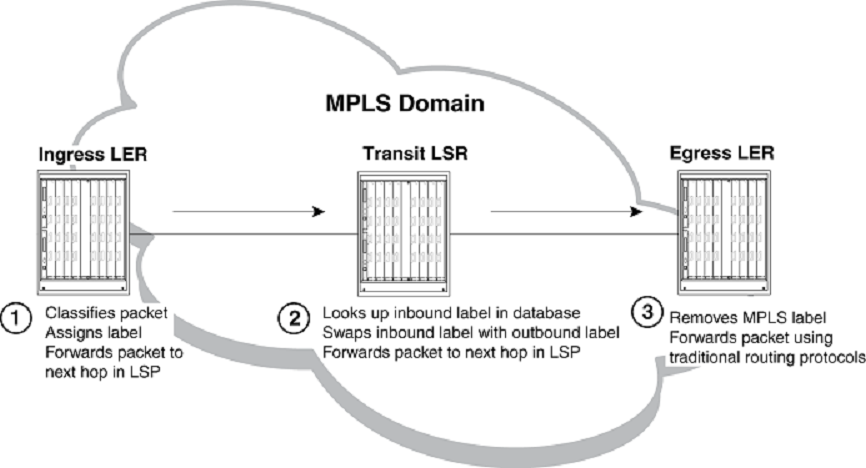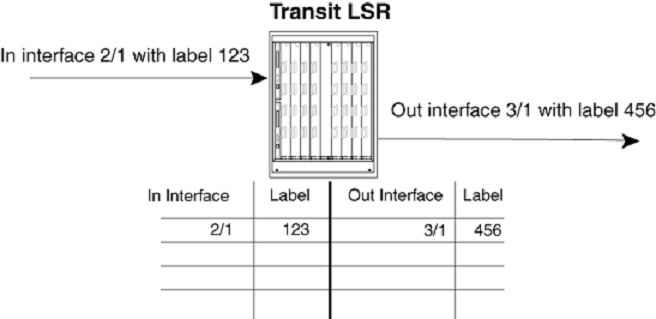How Packets are Forwarded Through an MPLS Domain
An MPLS domain consists of a group of MPLS-enabled routers, called Label Switching Routers (LSRs). In an MPLS domain, packets are forwarded from one MPLS-enabled router to another along a predetermined path, called an LSP. LSPs are one-way paths between MPLS-enabled routers on a network. To provide two-way traffic, the user configures LSPs in each direction.
The LSRs at the headend and tailend of an LSP are known as Label Edge Routers (LERs). The LER at the headend, where packets enter the LSP, is known as the ingress LER . The LER at the tailend, where packets exit the LSP, is known as the egress LER . Each LSP has one ingress LER and one egress LER. Packets in an LSP flow in one direction: from the ingress LER towards the egress LER. In between the ingress and egress LERs there may be zero or more transit LSRs . A device enabled for MPLS can perform the role of ingress LER, transit LSR, or egress LER in an LSP. Further, a device can serve simultaneously as an ingress LER for one LSP, transit LSR for another LSP, and egress LER for some other LSP.
Label switching in an MPLS domain depicts an MPLS domain with a single LSP consisting of three LSRs: an ingress LER, a transit LSR, and an egress LER.

Label switching in an MPLS domain works as described below.


